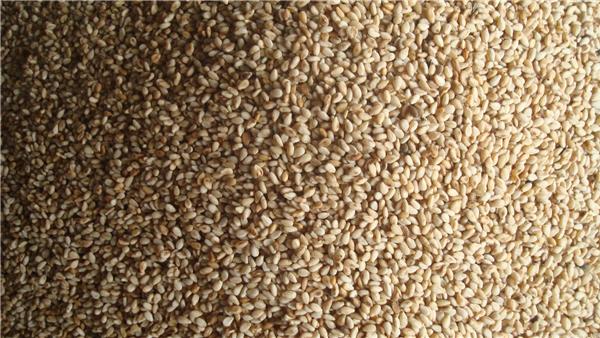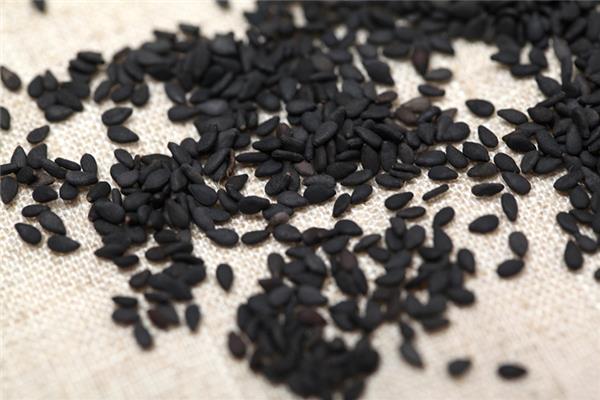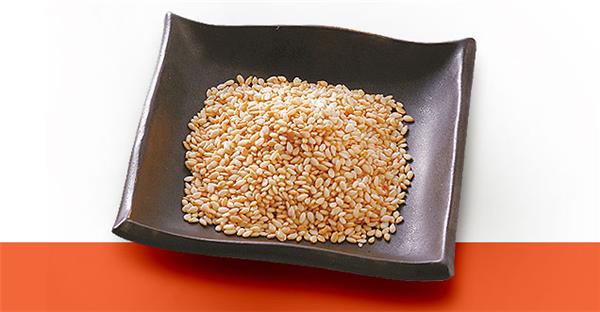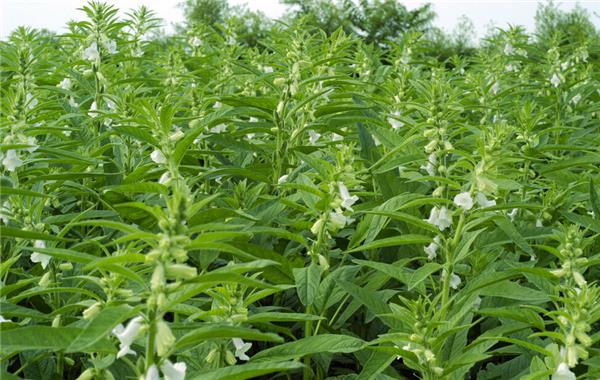Matters needing attention in planting Sesame Nutrition value of Sesame
The function of sesame is generally used to "eat": White sesame can be used to make sesame paste, black sesame can also be used to make sesame paste and so on. So if you can raise sesame seeds, it will feel very good.

Introduction to Sesame knowledge
1. There are two kinds of sesame, white sesame is better to eat, and black sesame is better for tonifying medicine. Sesame can be used as both edible and oil. The ancient science of health preservation Tao Hongjing evaluated it as "among the eight grains, only this is good". In daily life, people eat mostly sesame products: Sesame paste and sesame oil.
two。 Sesame aliases: Sesame, Fatty Sesame, Black Sesame, Jusheng, Dog lice, Oil Sesame, Cross Sesame, small Sesame.
3. Sesame can be squeezed into sesame oil (sesame oil) for consumption or pastry; peeled seeds are called sesame kernels, which are often used as excipients in cooking.
4. There is a hard film on the outside of sesame kernels, which can be crushed so that the human body can absorb nutrients, so the whole sesame seeds should be processed before eating.
5. Never stir-fry sesame seeds.
6. Sesame cooking use: cooking raw materials, such as pastry stuffing, dim sum, pancake fabric, can also be used as raw materials for dishes.
7. Sesame taste sweet, sexual flat, into the liver, kidney, lung, spleen meridian; it has the effect of tonifying blood and eyesight, dispelling wind and moistening intestines, promoting body movement, tonifying liver and nourishing hair, strengthening the body, anti-aging; it can be used to treat weakness, dizziness and tinnitus, hypertension, hyperlipidemia, cough, physical weakness, early white hair, anemia and yellowing, insufficient body fluid, stool dryness, less milk, urine blood and so on.

Matters needing attention in sesame planting
1. Planting method: Sesame can be planted alone or intercropped with other short-stem crops. For example, mixed or intercropped with sweet potatoes, peanuts, soybeans and other crops. Generally, one row of sesame seeds should be planted in the sweet potato field between 1 and 2 rows of ditches, or a row of sesame seeds should be made every 2 rows of peanuts. Sesame is more drought-tolerant, while legumes are more moisture-tolerant. Mixed cropping of sesame and legumes is beneficial to the protection of drought and waterlogging.
two。 Do not repeat: that is to say, a crop of sesame seeds has been planted last year, but it cannot be planted the next year. Otherwise, high output and high benefit will not be achieved. There are two main reasons for the failure of continuous cropping of sesame seeds: one of the reasons is that continuous cropping of sesame seeds will aggravate the disease. The longer the continuous cropping, the more pathogens in the soil, and the disease of sesame will become more and more serious. Infected by the disease, sesame plants will appear stunted, single plant dwarf, falling flowers and few capsules and other symptoms, and even a large area of wilting and death will occur. The second reason is that sesame is a crop that needs more fertilizer, continuous cropping will lead to nutrient imbalance, break the balance of soil fertility, resulting in the lack of nitrogen and potassium, and it is difficult to increase the yield of sesame. Therefore, continuous cropping of sesame seeds is unscientific and should be avoided.

3. Soil preparation and fertilization: select high-lying, well-drained fields, intensive cultivation, combined with soil preparation, apply sufficient basic fertilizer: 10 kg of urea and 50 kg of phosphorus and potassium fertilizer for every 667 square meters. Flatten and rake it to pieces and wait for sowing.
4. Sowing time: the sowing time is spring sowing and summer sowing. Spring sowing before and after Grain Rain, summer sowing before and after Grain in Beard, mainly wheat stubble and rape stubble. When sowing, sow the sesame seeds evenly on the finished border. The sowing rate is 1 kilogram per mu.
5. Supplement and topdressing seedling fertilizer: after topping of sesame, in order to prevent the phenomenon of de-fertilization of new branches, an appropriate amount of quick-acting fertilizer can be applied: when the new branches grow the second and third pairs of true leaves, 100 times of liquid metoprolol or paclobutrazol should be sprayed to prevent later inversion and increase the number of effective capsules.
6. Anti-waterlogging and drought resistance: when planting, first open a good border ditch and perimeter ditch, generally border surface width 2-2.5 meters, border ditch depth 0.3 meters. The depth of the trench is 0.4 to 0.5 meters. The seedlings were fixed when they grew 2-3 pairs of true leaves, the row spacing was 36 × 12-15 cm, and weeded once in the middle tillage. When the seedling height is 33 cm, topdressing is used to cultivate the soil.
7. Harvest processing: Sesame is generally harvested after the aboveground stems and leaves are ripe after autumn, the black sesame roots are cut off and tied into small bundles, and after drying, the black sesame seeds are threshed and dried to clean the impurities, which are sold as commodities.

In addition to the above points, in the process of planting sesame seeds, we should also achieve timely prevention and control of sesame diseases and insect pests, because this is a plant that is easy to be infected with diseases and insect pests, so we must give priority to prevention and treatment as a complementary rhythm. in order to avoid hard cultivation of sesame infected with diseases and insect pests.
Related
- Wuhan Hospital Iron Tree Blooming Result Was Instantly Frightened by the Gardener Master
- Which variety of camellia is the most fragrant and best? Which one do you like best?
- What is the small blue coat, the breeding methods and matters needing attention of the succulent plant
- Dormancy time and maintenance management of succulent plants during dormancy
- Minas succulent how to raise, Minas succulent plant pictures
- What are the varieties of winter succulent plants
- How to raise succulent plants in twelve rolls? let's take a look at some experience of breeding twelve rolls.
- Attention should be paid to water control for succulent plants during dormant period (winter and summer)
- Watering experience of twelve rolls of succulent plants
- Techniques for fertilizing succulent plants. An article will let you know how to fertilize succulent plants.



